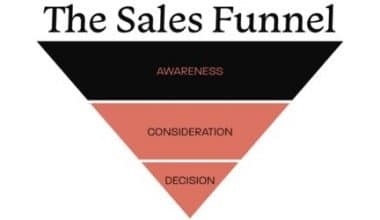Paid time off (PTO) is a key part of a business’s ability to be productive and make money. Even though it’s common, many enterprises aren’t required to give their employees the best PTO policies as part of their benefits program. This article talks about the standard PTO policy examples for a small business and the unlimited benefits involve.
PTO Policy
A paid time off (PTO) policy combines vacation, sick, and personal time into a single bank of days that employees can use when they start taking paid time off from work. A PTO policy sets up a pool of days that an employee can choose to use.
The PTO policy states that employees can be paid for some time off. Employee is free to use the PTO as they see fit. Doctor’s visits, school conferences, picking up Johnny at the bus stop, waiting for a furnace repairman, or the flu. The use of time is no longer the state’s responsibility, which is another step toward treating workers like the adults they are.
How Does PTO Work?
When they get hired, a few really employees may be used to getting a certain number of days for holiday, sick leave, and other personal needs. With a PTO policy, each worker earns a certain number of PTO hours over time. These hours are kept in a PTO bank. They can use the hours they’ve saved up for vacations, personal time, or personal consultations. The number of hours earned each pay period may go up as an employee stays with the company longer. A new employee may only earn one hour per pay period, but a veteran may earn three.
Benefits of Paid Time Off
They love getting paid time off. In fact, a good policy on time off is a big plus for companies that want to hire great people. It’s a solid deal maker. PTO is good for your employees, but it’s also good for you as an employer. Here are eight reasons why paid time off is good:
#1. Reduced Employee Burnout
Employee burnout is a big reason why people don’t work as hard and take time off when they don’t need to. Even your best workers will be less happy at work because of these things.
Paid time off makes it easy for workers to take a break from work without having to worry about their pay. With a wonderful vacation, they’ll get their energy back and be ready to get back to work.
Instead of waiting until Christmas Eve, give your employees short getaways every few months to reduce stress and boost productivity.
#2. Diverse Workforce
You should hire people who can do the job, no matter where they come from. The best way to do that is to make sure everyone feels welcome at work. A well-thought-out PTO policy can show that your organization is open to people of all cultures.
Your employees from minority groups will be able to spend special days with their families if you have the best PTO policies like optional time off. This gives them a reason to work with you instead of another company.
#3. Enhanced Organizational Awareness
If you set up a leave management system, employees can tell their managers and teams when they’re taking time off. This makes it easy for managers to plan their work weeks around upcoming time off.
Also, the employees know who will fill in for the absent employee. They can talk to them directly, which has less of an effect on schedules and workflow.
#4. Improved Workplace Relationship
By giving employees a choice of PTO types, you make it easier for them to be honest about why they need time off. It also helps managers figure out how important a situation is.
This mutual respect helps people at all levels of an organization get along better with each other. When employees trust management more, they are more likely to share business views and fears that aren’t as popular.
#5. Competitive Edge
A lot of big companies give their employees paid time off. We’ve reached a point where PTO is common. Your employees now and in the future have come to expect that from you.
With this information, it’s easy to see how a PTO policy that’s good for employees can help you get good people to work for you. If you and a rival provide the same position, perks, and compensation, a solid PTO policy can make the difference.
#6. Enhanced Talent Retention
PTOs give your employees a lot of freedom and show them that you understand their needs. They help you build trust, which is the key to long-lasting relationships with your employees.
It helps you meet people’s basic needs to feel valued and noticed, which helps you keep good employees for longer.
#7. Enhanced Brand Value
Internal branding is crucial, even if client value is what matters most. You need to establish yourself as a reliable company that people will want to work for and be loyal to over the long term if you want to attract and retain the best talent. Providing generous vacation benefits can boost morale and loyalty among staff members.
Litigation, which can be expensive and damaging to a company’s reputation, is also avoided. Most successful businesses also have generous best-paid time off (PTO) policies.
#8. Better Understanding of Your Workforce
An effective time off manager shows which sorts of PTO cause the most absences. Use this information to see if there is a peak season for each given type of vacation time.
You may wish to find out why there is a spike in vacation PTO requests around the month of April, for instance. Then, you can eliminate any obvious problems before they become dangerous.
Disadvantages of a PTO Policy
Here are the demerits of PTO policy.
#1. Some Will Hoard Sick Leave
This year has shown how important it is to stay home when you are sick. But because PTO doesn’t distinguish between vacation time and sick time, employees who aren’t feeling well may be more likely to “tough it out” at work in order to save their PTO for vacations. Sick employees spread illness, causing more individuals to miss work and reducing overall productivity. Plus, no one wants to catch a cold from a coworker who won’t just stay home.
#2. You May End up Paying Out More
In many states, employers have to pay out for unused vacation time when an employee leaves, but not for sick days or personal leave. But because PTO doesn’t make a difference between different types of leave, employers may end up paying out more.
#3. PTO Often Means Less Leave
SHRM says that companies with PTO policies give their workers an average of 17 days off, plus any corporation holidays. If a candidate does some quick math and finds that they’d have more with a traditional leave plan, they may not want to work for a company that offers PTO.
Best Pto Policies
The best PTO policies help you (the employer), your employees, and your company as a whole. PTO policies are always best to be complete, generous, and flexible so that employees feel valued and cared for. This makes them more loyal to your company and can make them more productive.
Rob Whalen, CEO and co-founder of PTO Exchange, said that the best PTO policies offer benefits that are flexible, varied, and easy to take with you. “Both the employee and the employer win if they are both happy with the policy and get something out of it.”
Here are some ways to make the best policies for PTO.
#1. Make it Attractive
Millennials and Gen Z, who make up most of the modern workforce, value workplace flexibility more than ever. Millennials are more likely to remain at a company if they are given more autonomy over their work schedules and compensation. Therefore, it’s in your best interest to adopt a strategy that caters to this need. A key feature of a flexible policy is that it includes multiple forms of paid time off and gives workers the option to pick the one that best suits their needs.
Consider allowing personal or medical leave in addition to standard PTO policy for small business holidays for a more inclusive workplace.
By allowing employees to request time off whenever they choose, you show that you value their input and do not operate a dictatorial business.
#2. Make It Clear and Understandable
It is very important that your PTO program is clear about what is allowed and what is not. This keeps you out of trouble as a business owner and makes your employees feel cared for and in the know. The PTO policy should be written in clear, detailed language and be available to everyone who works at your company. Make sure that the policy covers every type of employee you have.
#3. Create a Policy Based on Company Culture
While an unlimited PTO policy seems fantastic in theory, in practice it may not be so effective if the company culture discourages employees from taking time off. You can’t choose the appropriate policy style without first learning as much as possible about your firm, your personnel, and the culture of your organization or field.
#4. Offer Incentives or Benefits
One form of paid time off policy that often comes under fire is the “use it or lose it” provision, which states that unused vacation time at the end of the year will be forfeited. Accrual, on the one hand, can boost morale by allowing workers to take more time off, but it can also be discouraging if workers believe they cannot or should not use their PTO.
#5. Consider Offering Opportunities for Personal Time Off
Employees at Adobe are eligible for a paid sabbatical every five years, whereas Google allows for up to three months of unpaid leave. If your firm isn’t a digital behemoth and its employees don’t require sabbaticals, you may want to explore giving them paid time off (PTO) to volunteer, which will boost your organization’s charitable activities while also providing employees with a sense of purpose and appreciation for their job. Volunteer days at companies have also been shown to be a productive team-building activity.
PTO Policy Examples
Vacation policy frameworks can be organized in a number of different ways. Both offer employees paid time off, but the number of days and flexibility of each are distinct. Let’s consider the various examples of PTO policy
#1. Traditional PTO
A traditional paid time off policy would classify employees’ time off into distinct buckets for things like vacation, sick leave, and personal time. Volunteer time and work-life balance days are just we can offer two examples of the many types of PTO policy that to employees. Candidates may be more interested in working for you based on how you classify paid time off.
Staff retention can be improved with traditional PTO policy examples that allow workers to accrue more time off while they remain with the company. Employees are more likely to remain in their current positions, which can increase their longevity.
#2. Flexible PTO
When it comes to paid time off (PTO), employees typically have a certain number of sick days, vacation days, and personal days available to them. However, with flexible PTO policy examples, employees have more leeway in how they spend their PTO.
Employees who are parents and need a day off to attend a school event or activity may find this a helpful choice. People who desire to observe holidays that aren’t recognized by the federal government may find this useful as well. These examples of PTO policy are attractive to workers because they provide them the freedom to take time off whenever they need it.
#3. Unlimited PTO Policy
Unlimited PTO is one of the PTO policy examples. It lets workers take as much time off as they want, as long as they get permission from their manager. Unlimited PTO policy is becoming more and more popular, and it can help your company stand out when looking for new employees. It also makes employees less worried about running out of paid time off.
This policy can be hard to follow, though, especially when it comes to hourly workers. Unlimited PTO can make people afraid to take time off if management doesn’t set good examples of PTO policy and encourage the right way to use it. Try to give employees and managers a general idea of how much time off they can expect each year. Teams may also have different ideas about unlimited PTO based on how they work and what their supervisors need.
What is the Purpose of a PTO policy?
Paid time off (PTO) is a policy that combines vacation time, sick time, and personal time into a single bank of days for employees to use when they take paid time off from work. This bank of days can be used by employees when they take paid time off from work. A pool of paid time off (PTO) days are made available to employees under the terms of a paid time off (PTO) policy.
What Does PTO Mean in the Workplace?
PTO, or paid time off, refers to any time during which an employee continues to get pay despite being absent from work and is a more inclusive term than “vacation.” Consider it this way: paid time off (PTO) is equivalent to vacation time, but vacation time does not always equal PTO. Parental leave, jury duty leave, sick leave, paid time off over the holidays, and disability leave is some instances of paid time off (PTO).
Is PTO the Same as Sick Leave?
A paid sick leave policy is a separate insurance plan that provides employees with paid time off in the event of illness or certain other circumstances. A paid time off (PTO) policy allows employees to accumulate many forms of leave time, such as vacation, sick, and personal leave, into a single bank that can be used for any reason by the employee.
Can You Use PTO on Days You Don’t Work?
In most cases, you are free to spend your paid time off whenever you see fit. Some businesses impose rigid restrictions on the amount of time off employees can take (both paid and unpaid), dividing it up into distinct buckets like vacation time, sick time, and personal time. Other businesses give their workers a predetermined amount of paid time off (PTO) that they can utilize whenever they are unable to work or just do not want to work.
Standard Pto Policy for Small Business
It can be difficult to find the right balance between complying with state rules and ensuring adequate coverage for vacation periods while yet attracting and retaining talented workers who value paid time off.
When it comes to sick days, personal days, and vacation, a standard small business PTO policy should handle all of these concerns. Employees are free to utilize their paid time off however they see fit, while many standard PTO policy for a small business mandate a certain number of days be accrued each year. Some even have a time limit on when you can use them before they expire. As an alternative, some standard small business provides their staff with an unlimited PTO policy, allowing them to take as many days off as they need so long as their duties are covered.
Many of these details are determined by the laws of the respective states. A small business standard issue regarding PTO policy is a function of recruitment of top talent, and there are no federal laws regulating vacation policy for small companies.
Two weeks of paid vacation each year plus federal holidays are the standard PTO policy for small businesses in the United States. Possible increases in vacation time with longer service. In some fields, paid time off is accrued based on hours worked and may be carried over from year to year or lost if not used by a certain date. Unused paid time off must be compensated in some states, but in others, it is not required.
Unlimited PTO Policy
Unlimited vacation PTO policies are not created equal. Human resources experts from different companies will probably give you different responses.
However, here is how unlimited paid time off often operates: Human resource management software is commonplace in today’s businesses. A performance management tool is one such instance. A workforce management system is another possibility.
In any case, there is a procedure in place that calls for employees to request time off. Although the term “unlimited PTO” might imply that workers can take time off whenever they please, this is probably not the case. Time-off requests are still handled through the manager’s office. Managers must provide their blessing before workers can take their desired time off.
The “unwritten rules” of many of the best PTO policies are either common knowledge or explicitly stated. They are free to take as much time off as they need throughout the year, but it shouldn’t be at the expense of their productivity or contributions.
Can I Use My PTO After 2 Weeks’ Notice?
After providing your employer with two weeks’ notice, you are eligible to make a request for paid time off (PTO). But keep in mind that the answer you get from your company can be “no.” If you use any of your remaining paid time off during the last two weeks of your employment, it will be significantly more difficult for your employer to locate a suitable replacement for you.
How Does PTO Work When You Quit?
When an employee leaves the firm, is terminated, or is separated from the business in any other way, they may be eligible to receive payment for any accrued but unused vacation time or paid time off (PTO). Approximately 25 out of the 50 states have laws that oblige employers to compensate departing workers for any unused paid time off (PTO) they have accrued while working for the company.
What Happens if You Don’t Give two Weeks’ Notice?
There is no legal requirement for employees to provide any notice before quitting their jobs, let alone two weeks’ worth of notice, despite the norms and standards that exist in the workplace. There are no legal protections for businesses in the event that employees choose to leave the company, despite the fact that broken contracts may have an effect on pay or lead to legal action.
FAQs
Why should you have a PTO policy?
To show your employees how much you appreciate them, incorporate a PTO policy in the company handbook. Employers who are aware of this fact typically create compensation packages that take it into account.
Are you legally obligated to offer PTO?
The federal government does not mandate any minimum amount of paid time off for employees, but several states and cities do.
How fast does PTO accrue?
According to a study by SHRM, Employees with less than two years of service accrue ten days of PTO each year. Employees with more than five years of service accrue 25 days of PTO each year.






